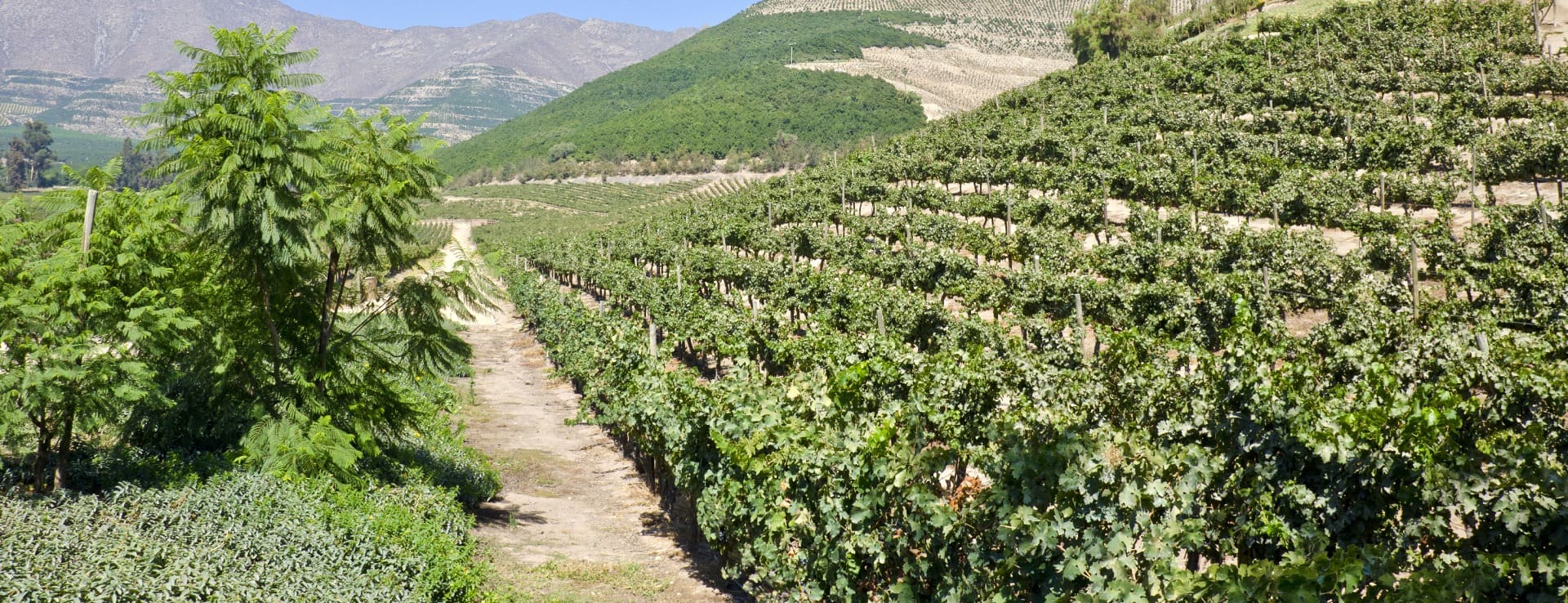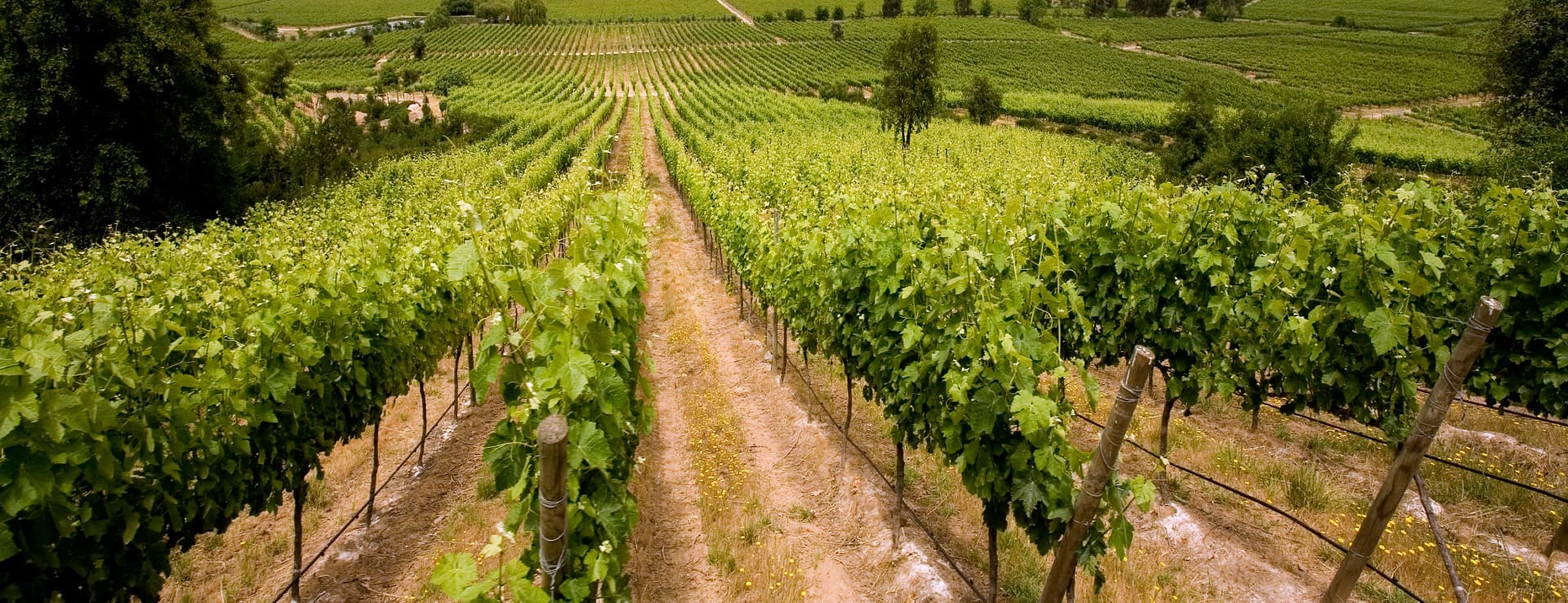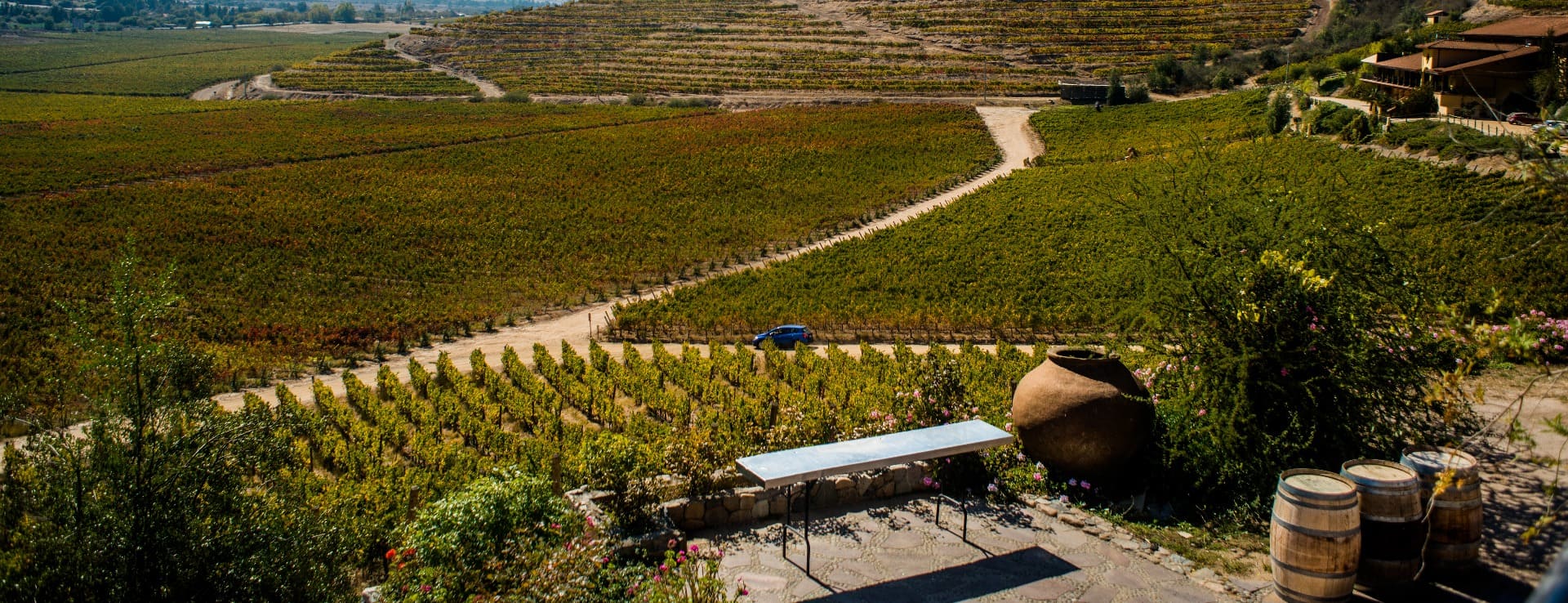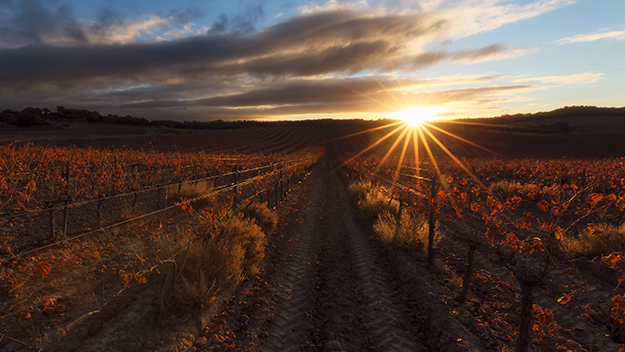Find your winery or vineyard
Infographic of the Denomination of Origin

Change to imperial units (ft2, ac, °F)Change to international units (m2, h, °C)
Total surface area:
1.800 ha4.448 ac
Altitude of the vineyards:
Min: 100m
Max: 1.100m
Min: 328ft
Max: 3.609ft
Temperature:
Min: 5º
Max: 28º
Min: 41°F
Max: 82°F
Yearly rainfall:
214 l/m220 l/ft2
Designation of origin Valle de Aconcagua
LOCATION AND HISTORY
The designation of origin Valle de Aconcagua is located halfway between the provinces of Los Andes, San Felipe de Aconcagua and Quillota, belonging all of them to the Chilean region of Valparaiso. Valle de Aconcagua enjoys the status of designation of origin since 1994. In order to get this title, the wines produced must be made at least 75% of grapes from the region aiming to belong to the DO. In the Aconcagua Valley, vineyards expand along an extension of approximately 1,025 ha. The varieties of grown grapes are: Chardonnay, Syrah, Merlot, Cabernet Sauvignon and Carménère. The first plantations of vines date back to 1870, thanks to the vine grower Maximiano Errázuriz.
SUELOS
The Aconcagua River originates in the mountain of the same name, which at almost 7,000 meters is the highest peak in the Andes, and then flows into Valparaiso, in the Pacific Ocean. The Aconcagua region has the particularity of having vineyards on the coast, as well as in the Andes at more than 1,100 meters of altitude. Another Chilean geographical landmark is the coastal plains, long strips between the Pacific Ocean and the Coastal Range. South of the Aconcagua River, the plains are wide and long. On these plains, there are large sources of limestone and slate soils that are very interesting for the development of viticulture.
In the designation of origin Valle de Aconcagua is find (and with greater presence in the summer season) dry and hot days joined by cool nights thanks to a gradual decrease in temperature. The cold winds that come from the coast lower the high temperatures of the summer. The soils of the DO Valle del Aconcagua are sandy and stony and in them we find fluvial sediments with a high presence of organic and mineral material. On its banks there are alluvial and colluvial terraces that are ideal for vine growing. Red varieties have a long tradition in the inland valley near the Andes, while the Chardonnay, Sauvignon Blanc and Pinot Noir, vines favoured by cold climates, are thriving and showing excellent results in the coastal area of the valley.
CLIMATE
The Aconcagua Valley enjoys a Mediterranean climate throughout the year. A climate in which factors such as the so-called Humboldt current (the rise of deep, cold water to the sea surface) weigh heavily, providing fresh breezes from the Pacific Ocean. Due to these factors, the grapes planted in the Aconcagua Valley have a ripening process that takes about three weeks longer than in the rest of the Chilean wine regions, an aspect that enhances the flavour, intensity and sugar concentration in the wines obtained. The rain in the Aconcagua Valley tends to be scarce, with annual rainfall close to 250 mm. This scarcity of rain makes it easier for winegrowers to control the growth of the grapes and their ripening process.
It is necessary to point out that the climatic conditions are also partly responsible for the lack in the Aconcagua Valley of traditional diseases in the vine derived from the presence of fungi, such as botrytis and mould.
The orography of the Aconcagua Valley allows us to discover a flat valley, which extends over 4 km wide, surrounded by an area of hills with heights between 1,500 and 1,800 meters. The climate, together with the drop-in temperature during the night, as well as the great night sky brightness, makes this designation of origin highly suitable for the production of red grapes.
TYPE OF GRAPES
In the Aconcagua Valley inland, in the areas surrounding the Andes prevails the cultivation of red grape varieties, while in coastal areas the cultivation of varieties such as Chardonnay, Pinot Noir or Sauvignon blanc has gained presence in recent years. With regards to the red varieties, in the designation of origin Valle del Aconcagua we find varieties such as Syrah, Carménère or Cabernet Sauvignon. The percentage of red grapes in the total wine production of the Valle del Aconcagua is set in 84%.
Discover more wineries and vineyards for sale in these wine regions in Chile
Subscribe to our mailing list to receive news about wineries and vineyards.




